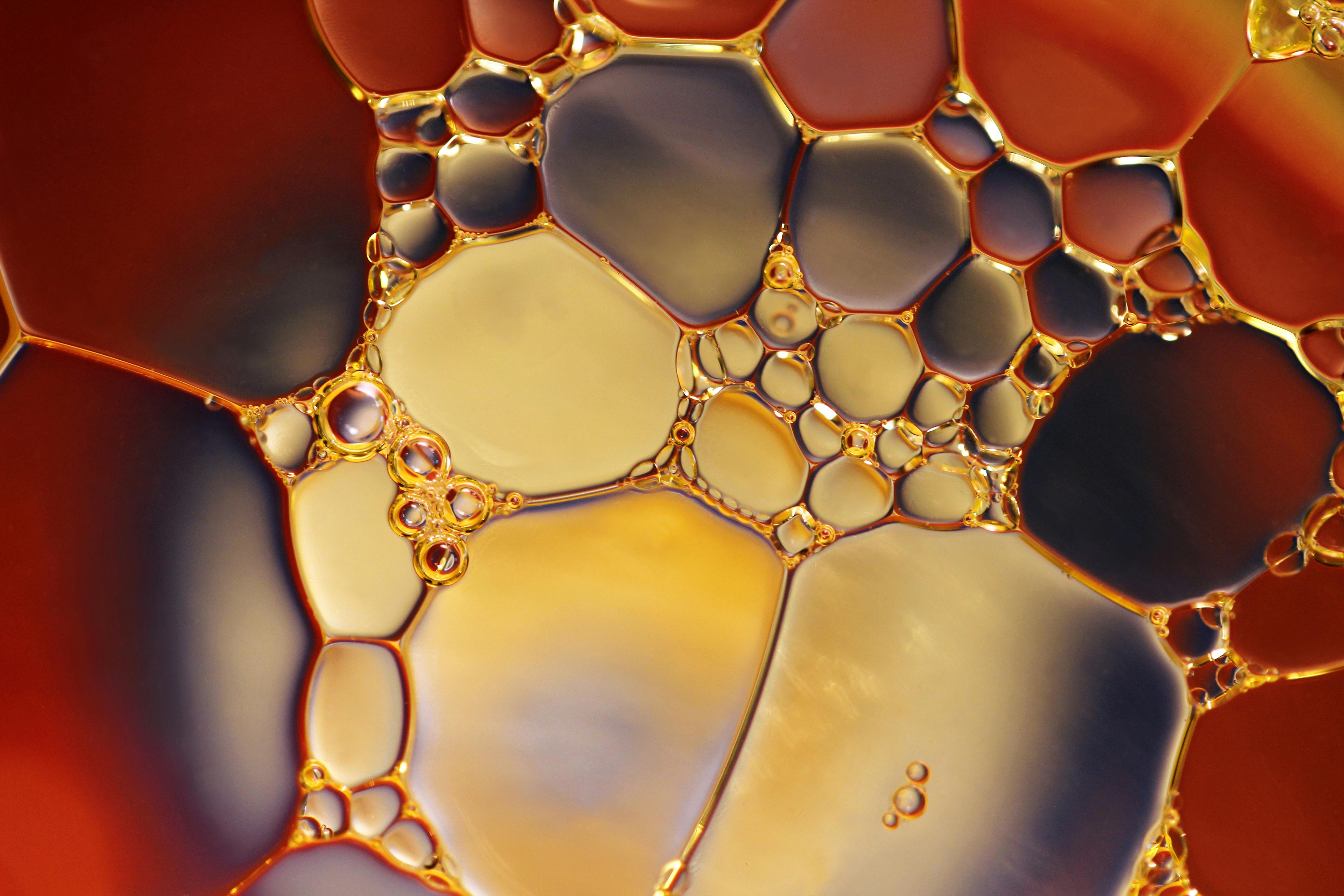Floating oil in water can be a major pollutant and is often very difficult to remove. This oil can come from many sources, such as industrial spills, fuel leaks, or runoff from roads and parking lots. Fortunately, there are several techniques that can be used to effectively remove floating oil from water. These techniques range from the use of physical barriers to absorbent materials, to chemical treatments that break down the oil molecules. In this article, we will discuss some of the most commonly used methods for removing floating oil in water.The best way to remove floating oil from water is by using an oil skimmer. An oil skimmer is a device that uses a belt, tube or disk to collect the floating oil from the surface of the water. The skimmer collects the oil which can then be removed from the top of the device. Additionally, absorbent pads or booms can be used to capture and absorb the floating oils on the surface. These materials should then be disposed of in an appropriate and safe manner.
Various Methods to Get Rid of Oil on Water
Oil spills are a common occurrence in water bodies and can cause significant damage to marine life and the environment. To mitigate this problem, it is important to find effective ways to remove oil from affected areas. There are several methods that can be used for this purpose, including physical removal, chemical dispersion, bioremediation, and in-situ burning.
Physical Removal
Physical removal is one of the most common methods used for oil spill cleanups. This process involves using skimmers and other equipment to scoop oil off the surface of the water. The oil is then transferred to containers for proper disposal. This method is most effective when done immediately after an oil spill occurs, as it prevents further contamination of the environment.
Chemical Dispersion
Chemical dispersion is another popular method used to combat oil spills. This process involves using chemicals such as detergents or surfactants to break down the oil into smaller droplets that can be more easily removed from the water by skimmers or other equipment. Chemical dispersion also helps reduce the impact of an oil spill on marine life and surrounding ecosystems by preventing toxic substances from entering into food chains and habitats.
Bioremediation
Bioremediation is a relatively new technique used for removing oil from contaminated areas. This process involves introducing microbes into affected areas which break down components of petroleum products into harmless byproducts such as carbon dioxide and water vapor. Bioremediation is a cost-effective way to clean up large areas affected by an oil spill and can help reduce long-term damage caused by petroleum products in marine environments.
In-Situ Burning
In-situ burning is a controversial method used for removing large quantities of spilled petroleum products from the environment quickly and efficiently. The process involves burning crude oil at its source in order to reduce its mass and volume so that it can be more easily skimmed off the surface of water bodies or collected using other equipment. In-situ burning has been criticized for its potential environmental impacts, but it remains a popular choice for containing large-scale spills due to its cost effectiveness and speed of implementation.
Natural Solutions to Remove Oil from Water
Removing oil from water can be a tricky task, but fortunately, there are many natural solutions available that can be used to effectively remove oil from water. One of the most common methods is to use absorbent materials such as peat moss, sawdust, or straw to soak up the oil. These materials should be completely submerged in the water and allowed to sit for a few hours before being removed and replaced with fresh material. Another option is to use a skimmer or another type of strainer to remove floating oil from the surface of the water. This might require several passes of skimming and straining in order for all of the oil to be removed.
A third method of removing oil from water naturally is by using natural resources such as plants or bacteria. Certain types of plants, such as duckweed, can absorb large amounts of oil from the water and help clean it. Bacteria also naturally break down certain types of hydrocarbons found in oils, making them an effective method for cleaning up oil spills. Finally, another natural option is to use oils themselves by creating an emulsion with other oils or detergents that can be used to trap and remove oil from the water.
No matter which method you choose, it is important to remember that any type of natural solution used should not have any negative impacts on nearby ecosystems or wildlife. As such, it is important to research any potential solutions thoroughly before using them in order to ensure they will not cause any harm. Natural solutions are often more cost-effective and less damaging than chemical solutions when it comes to removing oil from water, making them an ideal choice for many situations.
Oil Spill Treatment Solutions
Oil spills can have devastating effects on the environment, so it is important to have effective solutions for removing oil from water. There are a variety of chemical solutions that can be used to treat an oil spill, including detergents, surfactants, and dispersants. Detergents are effective at breaking down the oil into smaller droplets, which makes it easier to remove from the water. Surfactants work by reducing the surface tension between two liquids, allowing them to mix more easily. Dispersants are designed to quickly disperse oil in water and keep it from floating on the surface. These solutions can be used alone or in combination with other methods such as skimming and burning.
In addition to chemical solutions, physical methods such as skimming and burning can also be used to remove oil from water. Skimming involves using a boat-mounted device to skim off the oil from the surface of the water. Burning involves using a fire-proof boom and containment vessel to collect and burn off any spilled oil. While these methods can be effective, they do have some drawbacks such as creating air pollution and being more expensive than chemical methods.
In order to determine which solution will be most effective at treating an oil spill, it is important to consider factors such as environmental conditions, location of the spill, size of the spill, type of oil spilled, and cost-effectiveness of each method. Additionally, it is important to consider how long each solution will take to work in order for an appropriate response plan to be designed and implemented quickly. By understanding these factors and weighing them against each other, responders will be able to choose the right solution for their needs.
Using Dispersants to Break Up Floating Oil
Oil spills are a serious environmental problem that can cause great damage to ecosystems and marine life. One of the most common methods for cleaning up oil spills is to use dispersants, which are chemicals that help break down the oil into smaller particles. Dispersants work by breaking down the surface tension of the oil, allowing it to mix with water and become more easily absorbed. This makes it easier for cleanup crews to collect the oil and prevent it from spreading further.
When using dispersants, it is important to consider the potential environmental impacts of the chemicals involved. While dispersants can be effective in reducing the amount of oil on the surface of water, they also have potential negative impacts on marine life and aquatic ecosystems. It is important to understand how these chemicals interact with one another and their effect on organisms living in an affected area before using them in a cleanup effort.
In addition to considering potential environmental impacts, it is also important to assess whether or not a particular dispersant is effective at breaking up floating oil. Different types of dispersants work better or worse depending on factors such as temperature, salinity, and type of oil spilled. It is important to select a dispersant that will be most effective at breaking up floating oil in a specific situation.
Using dispersants can be an effective way to clean up oil spills, but it is important to consider all possible impacts before making a decision about which type of chemical should be used. By understanding how different types of dispersants interact with one another and their potential effects on marine life and aquatic ecosystems, cleanup crews can make informed decisions about which type will be most effective in breaking up floating oil in any given situation.

Skimming Devices to Collect Floating Oil
Oil spills are a growing environmental problem that can cause significant damage to the environment and wildlife. Skimming devices are used to collect floating oil from water surfaces in order to prevent further damage. These devices come in a variety of shapes and sizes, and can be used in different types of environments. They are typically made out of materials such as plastic, rubber, or metal.
The most common type of skimmer is the free-floating skimmer, which is designed to be towed behind a vessel or boat. This type of skimmer can be used in calm open waters, where there is limited wave action. The skimmer will move through the water collecting the floating oil on its surface or inner hulls. Other types of skimmers include those that are permanently mounted on vessels or platforms, as well as those that are dropped directly into the water from an aircraft or helicopter.
Skimming devices come equipped with various features to help them collect oil more effectively. Many have adjustable intake nozzles which allow them to adjust their collection rate depending on the amount of oil present in the water. Additionally, they may also include filters and separators which help remove debris from the collected oil before it is pumped ashore for storage and disposal.
The effectiveness of skimming devices depends largely upon their design and location relative to the source of pollution they are collecting from. It is important for operators to select a device that is suitable for their specific environment and situation. Additionally, it is important for operators to regularly inspect and maintain their skimmers in order to ensure they remain operational at all times.
Oil Spill Booms
Oil spill booms are floating barriers used in containment and recovery operations. They are designed to contain and collect oil, debris, and other pollutants from the surface of water bodies. These booms act as a physical barrier to contain the spill and prevent it from spreading any further. Booms are available in various sizes, materials, and designs for different applications. The most common types of booms used for oil spill containment are solid wall containment booms, inflatable containment booms, absorbent boom, and skimmer boom.
Solid Wall Containment Booms
Solid wall containment booms are made of a strong impermeable material such as plastic or rubber coated fabric. They are designed to be lightweight and easy to deploy yet strong enough to contain the oil or debris. These solid wall containment booms are typically used in areas where there is a low risk of wave action or currents that could move the boom around. They can also be used in areas where there is a high risk of wave action or currents as long as they are properly secured with anchors or mooring systems.
Inflatable Containment Booms
Inflatable containment booms are designed for use in areas where there is higher risk of wave action or currents that could move the boom around. These booms can be filled with air or water depending on the application and environment they will be deployed in. Inflatable containment booms typically have either an internal bladder filled with air or an external bladder filled with water to provide buoyancy and additional stability against wave action or currents. They are typically used in shallow waters near shorelines where there is a greater risk of wave action.
Absorbent Boom
Absorbent booms are made out of absorbent materials such as polypropylene or cotton pads surrounded by a netting material such as nylon mesh which helps keep the boom together so it doesn’t break apart when exposed to wave action. The absorbent material absorbs the oil or other pollutants from the surface of water bodies while the netting prevents it from breaking apart due to wave action and keeps them contained within the boom section. Absorbent booms can also be used in combination with other types of floating barriers such as solid wall containment booms or inflatable containment booms for added protection.
Skimmer Boom
Skimmer booms are designed for use in areas where there is a high risk of waves that could cause other types of floating barriers to break apart easily due their lightweight construction. Skimmer booms typically have an internal bladder filled with foam pads which provides additional buoyancy against wave action while also allowing them to recover spilled oils more efficiently than other types of floating barriers since they tend to remain intact even when exposed to large waves making them ideal for recovering large amounts of oil quickly.
Sorbents as an Effective Way of Removing Floating Oil in Water
Floating oil in water is a major environmental pollutant. Sorbents are materials used to absorb floating oil from water bodies. They are highly effective and can be used to remove oils and other pollutants from the environment. Sorbents come in various forms, such as granules, beads, and fabrics. They are typically made of polypropylene or other synthetic materials that are chemically inactive and resistant to degradation.
The sorbents are designed to capture both dissolved and suspended oils from the water. They are able to absorb a large quantity of oil without any significant decrease in their effectiveness. The sorbent material is then collected for disposal or reuse depending on the type of oil it has absorbed. Sorbents can also be used as a pretreatment step before other forms of oil removal such as skimming or evaporation.
When using sorbents for floating oil removal, it is important to use the right type for the job at hand. Different types of sorbents will work better for different types of oils and it is important to use one that is specifically designed for the job at hand. Additionally, it is important to select a sorbent that has been tested and approved by regulatory agencies such as the Environmental Protection Agency (EPA). The effectiveness of the sorbent will also depend on its size, shape, porosity, and adsorptive capacity.
Sorbents are an effective way of removing floating oil from water bodies because they can capture large quantities of oil without significantly decreasing their effectiveness over time. Additionally, they can be used in a variety of situations including pre-treatment steps before more specialized methods such as skimming or evaporation are employed. Finally, it is important to select a sorbent that is specifically designed for the job at hand and has been tested and approved by regulatory agencies like the EPA in order to ensure its effectiveness when removing floating oils from water bodies.

Conclusion
Floating oil spills on water surfaces can be difficult to remove, but there are tools and techniques available to help with the process. When dealing with a spill, it is important to use the appropriate method for the situation. Physical containment, mechanical recovery, chemical dispersion, bioremediation and natural attenuation are common methods of removing floating oil from water. Each method has its own benefits and drawbacks depending on the size of the spill and environmental conditions. It is important to consider all possibilities when determining which method will work best for a given situation.
In conclusion, floating oil spills on water surfaces can be hazardous and damaging to both aquatic life and our environment. Therefore, it is important to use an appropriate technique in order to safely and effectively remove oil from water surfaces.

